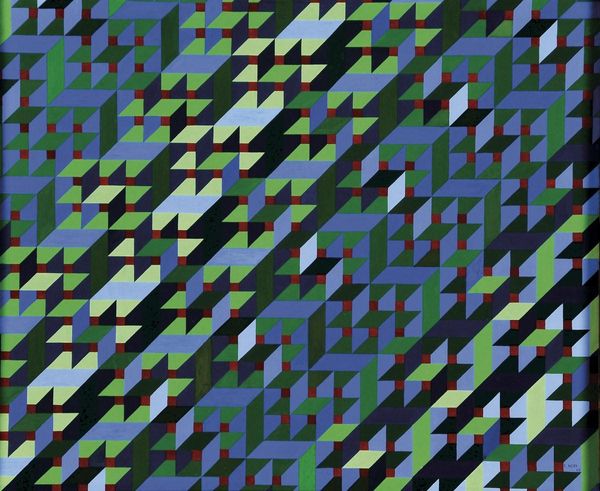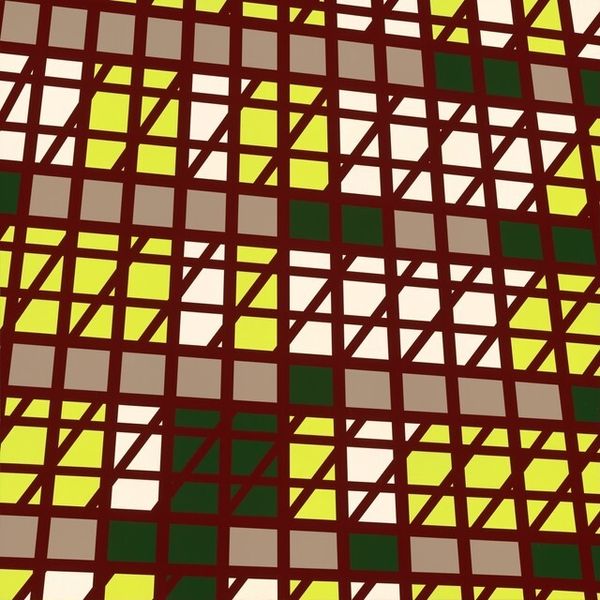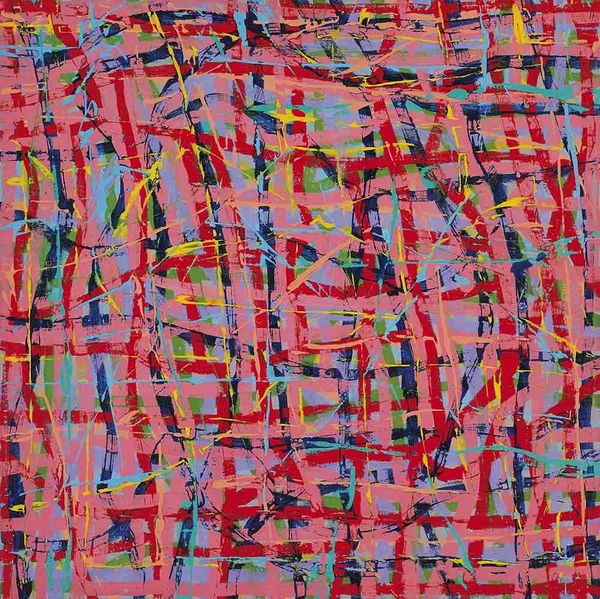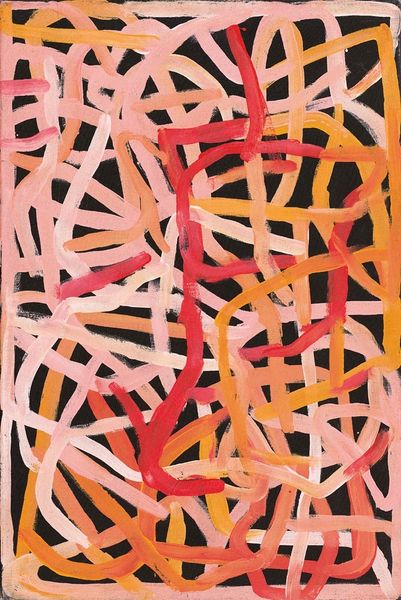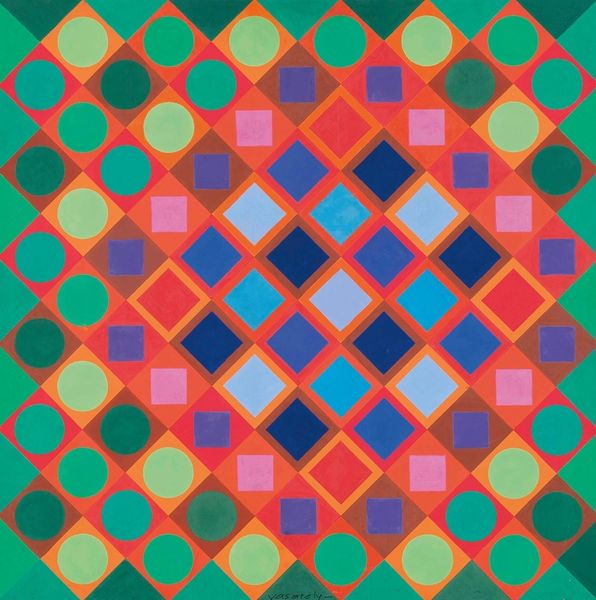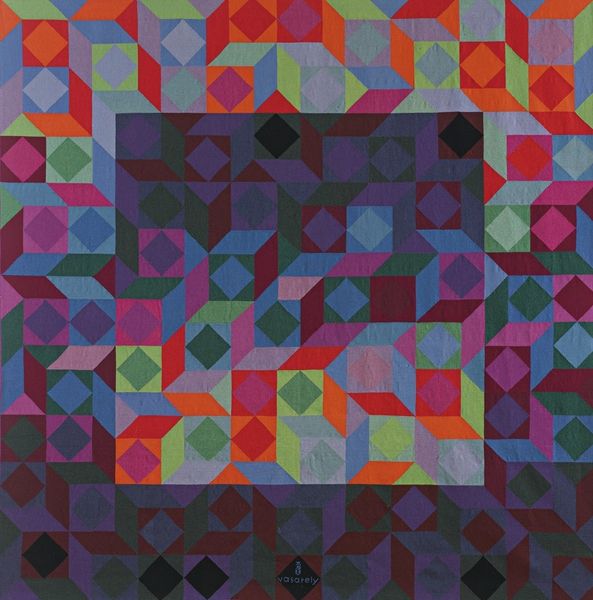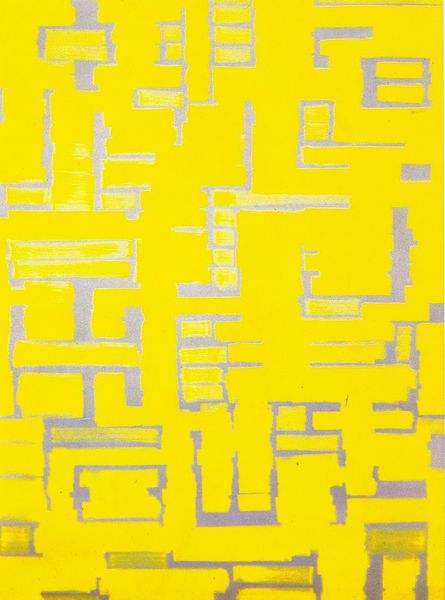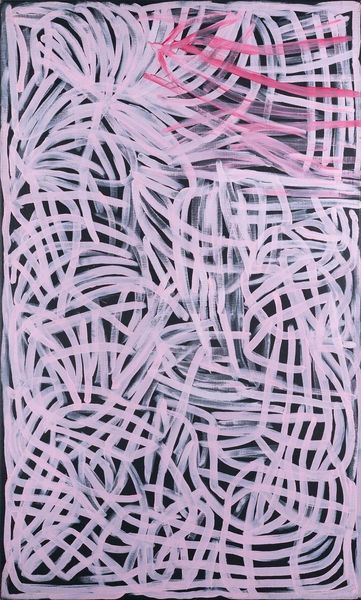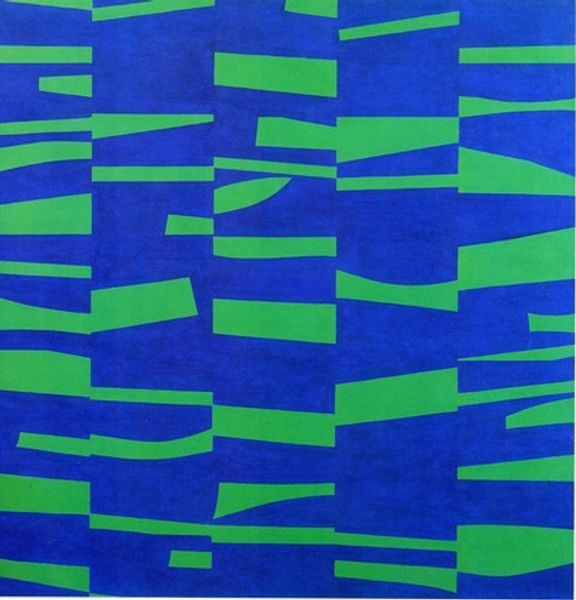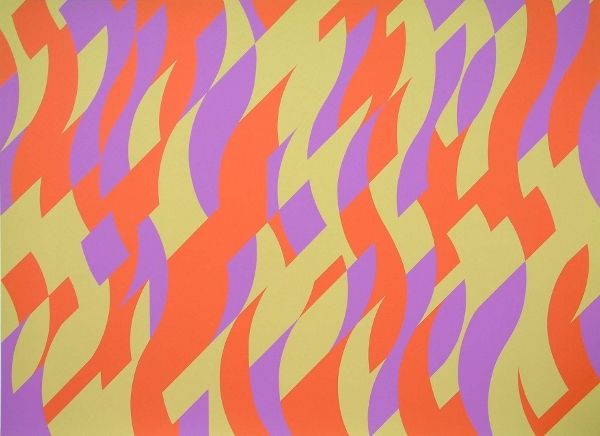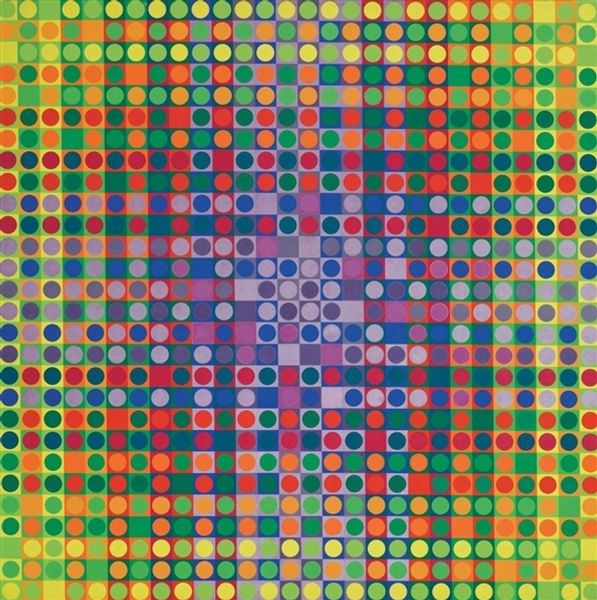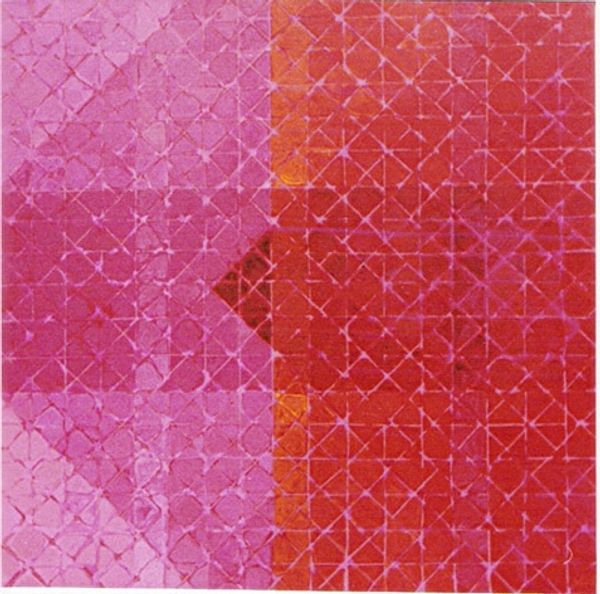
Dimensions: support: 914 x 911 mm
Copyright: © The estate of Kenneth Martin | CC-BY-NC-ND 4.0 DEED, Photo: Tate
Editor: Kenneth Martin’s "Chance, Order, Change 12 (Four Colours)" is a vibrant, geometrically complex piece. The layering of red, green, and blue striped bars creates a sense of controlled chaos. What organizing principles are at play here? Curator: The painting reveals an exploration of structured randomness. Note the interplay between the colours; each hue generates its own plane, disrupting any clear sense of depth. Observe, also, how the white stripes rhythmically dissect and unify the chromatic bars. Editor: So, it's less about a specific subject and more about the relationship between the forms themselves? Curator: Precisely. The material qualities and their arrangement are paramount, suggesting an almost mathematical elegance. Editor: I see it now, focusing on structure opens up a whole new way to appreciate the work. Curator: Indeed. It emphasizes that aesthetic experience can arise from the rigorous application of formal principles.
Comments
tate 8 months ago
⋮
http://www.tate.org.uk/art/artworks/martin-chance-order-change-12-four-colours-t03191
Join the conversation
Join millions of artists and users on Artera today and experience the ultimate creative platform.
tate 8 months ago
⋮
In this painting, Martin used the same procedure to generate the lines as in the 'Chance and Order' painting with black lines also in this room. He used green, red, mauve and blue, in that order. He commented, 'when I turn the drawing round I repeat the first drawing in the new orientation. After completing the drawing of all four directions I would have performed a symmetrical act. However, not only have the first lines of the original position qualified the lines following within itself, but this process has continued throughout the work, so that I get... an asymmetric design. Time takes a part in producing the final configuration. It is a history picture.' Gallery label, September 2004
